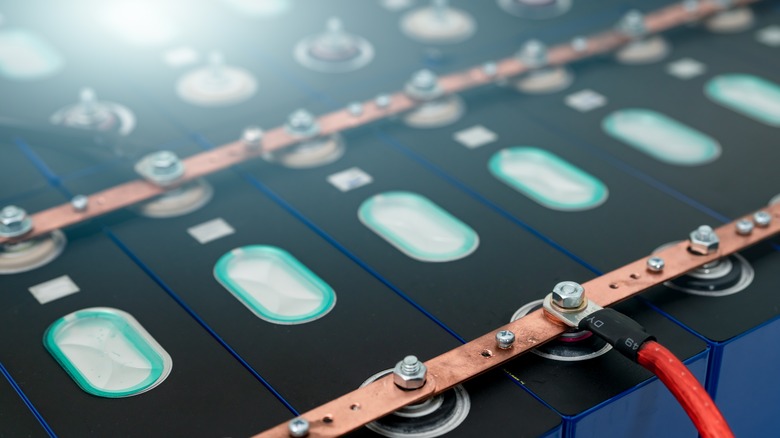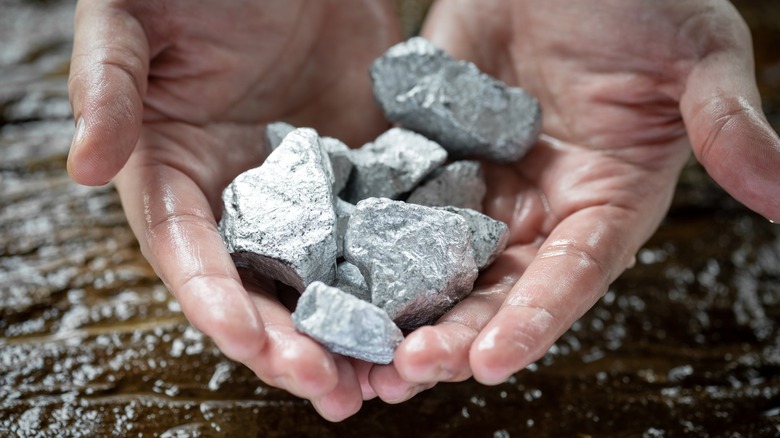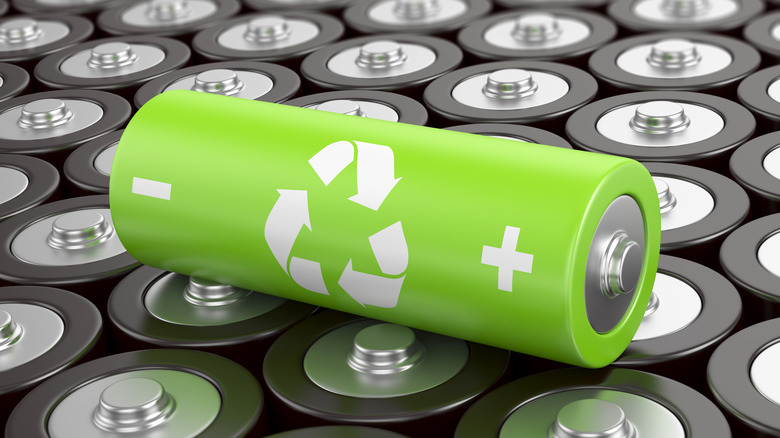The Downside Of Dependence On Rare Earth Elements For Electric Cars
The main reason that electric cars have so much public attention is that the potential switchover from smoke-belching combustion engines could do a lot of good for the environment, expediting the healing of the ozone and reducing humanity's overall dependence on finite fossil fuels. Those are both very good reasons to drive an EV, but there is a bit of a problem with the concept that could prove just as environmentally dangerous.
EVs are, obviously, powered by electricity rather than gasoline. That electricity is stored in an internal lithium-ion battery. The thing that many of us often forget is that batteries don't grow on trees. While a rechargeable battery is substantially less wasteful than the disposable batteries you'd find in toys, they still need to come from somewhere, and that somewhere is an energy-intensive mining operation. Batteries may be greener than gasoline once they're doing their duty, but it's their creation that needs close examination.
The components of a battery
An EV's battery is made up of a variety of electroconductive rare earth elements, including neodymium, dysprosium, and of course, lithium. These elements are mined in large quantities all over the world at the same scale as precious metals like gold and silver. In fact, those rare earth mines are debatably even more valuable than gold or silver because they form the backbone of our battery-powered society.
The problem here is threefold – firstly, much like the oil pumped up to produce gasoline, rare earth elements are a finite resource. There are only so many veins of the stuff to be found around the world, and as it becomes more scarce, prices increase. Second, mining out these ores is a very energy-intensive process. You need power to fuel all of the mining equipment, lights, and processing machines. Thirdly, processing ores into usable forms produces a lot of excess waste that, at least at the moment, we can't really do anything with. Some of the waste can even be radioactive, which can be dangerous for both people and the surrounding environment.
What can we do?
Battery power has become integral to modern society. We may be able to gradually wean ourselves off of oil, but until someone cracks clean hydrogen power or cold fusion, we can't stop mining ore for batteries. So, what can we do to mitigate the negative effects of rare earth harvesting?
First and positively foremost is recycling. As long as the batteries in EVs are intact, the elements that make them up can be used to produce new batteries. In addition to batteries, some automotive companies have been researching ways to recycle the magnets found in electric motors, which are also made of rare earth elements.
Secondly, we need alternative battery compositions. Automotive companies have been researching ways to remove or replace some of the rarer elements in batteries like cobalt with something more environmentally friendly and widely available. This would reduce the amount of required mining, as well as make recycling a little easier.
Finally, we need new engine designs. Switched reluctance motors, for example, can be electrically powered without making use of rare earth magnets, which would be one less thing we'd need ore for. They're not quite reliable enough for commercial use yet, but the science is there.
Working in the environment's best interest is why EVs became so popular to begin with, but it's an endless battle. To really do our best, we always need to be researching the next best technology to optimize our society and eliminate waste.


